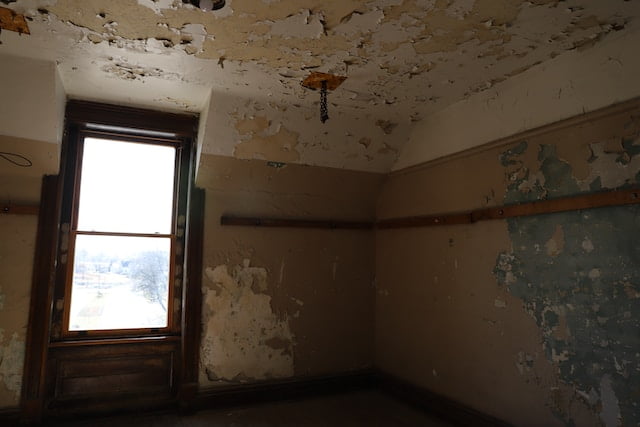Mould types and how to remove them?
Do you know someone who has had trouble cleaning the dirt caused by mould? Now, you think it's time you had a cleaning company who provides mould removal services to stop it before it happens to you. Whether this has already happened or is about to happen because of the filth inside the house or other circumstances like leaks, etc. Not only will you explore everything you should know about mould removal here. From identifying signs of infestation to best practices for secure removal. So grad a cup of tea and allow yourself to see through how cleaning mould is important and achievable! The author will discuss the dangers of mould for human health. And how regular cleaning services can stop it here and there.
What is mould and how does it affect your health?
Mould is caused by a damp and humid condition - a type of fungus that grows on organic matters. It might look like a harmless nuisance when it first appears. But its presence in your home can pose serious risk to your health. For respiratory problems with allergies and even neurological issues, the dangers of mould should be taken very seriously. The spores it releases into the air can cause allergies and even lead to a life-threatening illness. If left unchecked, mould growth can spread quickly across your entire property, affecting every aspect of your everyday life. With the knowledge and tools at your disposal, you can remove this annoying fungus from the inside of your house. And protect yourself and those close to you from its adverse effects.
Different types of moulds you can find
- Alternaria
- It is often found in showers, tubs and near washbasins. In the event of a leak, mould may spread rapidly.
- Ulocladium fungi
- In black and they are grouped together. Found in kitchens and basements which suffered leakage.
- Mucor fungi
- 40 mould species from the Mucoraceae family. Found in the soil and surfaces like rotten vegetables.
- Trichoderma
- Most widely grown fungi... Its enzyme attacks wood, textiles and paper and can damage the foundations of construction.
- Aureobasidium
- The colour varies from black to a creamier or rose hue. Found in bathrooms and kitchens, growing in tile grout or caulking.
- Acremonium
- A type of low-spread mould - common in water-damaged buildings. It can be powdery in nature. In humidifiers, and HVAC cooling coils.
- Aspergillus
- It has grey or green spores that can grow in thick layers of mould. But these several aspergillus species appear under various different colours.
- Stachybotrys
- Bold and toxic black moulds - Toxingenic in nature. You can find it in damp places like bathrooms, wet carpet, and laundry room.
- Penicillium
- Allergic in nature - Found in shades blue-green, white, and yellow with a powdery texture. If there's no humidity inside. It damages woven goods.
- Fusarium
- Talking about danger, it's not the best to be around it if you have allergy symptoms. Also known as Quorn - fast spreading and can cause a structural damage in the house.
- Cladosporium
- It can be found in a sunshine-free area and poor ventilation. Reactions can be an infection of the fingernails, eyes, or toenails. It is also known to induce an allergic reaction, in most cases in children.
- Chaetomium
- Commonly thought to be black mould. This type of mould can be found in drywall damaged by water, wood surfaces, wall paper and under a wet carpet. The dangers caused by it are sinus problems, and asthma.
Exposure to mould can pose a danger to human health
Now that you have seen the list of names of moulds surrounding us. Although, for obvious reasons, we all don't it. It is still a problem in many households often overlooked. Knowing that growing mould can pose serious health risks for you and your family is a step in the right direction. The best way to deal with it is to contact for the professionals remove them as soon as they appear. A prolonged exposure to mould spores can lead to problems like...
- asthma
- respiratory problems
- skill irritation
- allergies and infections should be at the top of everyone's priority list. Not to mention vulnerable kids living in a place full of mould.
Mould is a silent alien that can harm our health and our homes. Not only does it not look friendly. But the dangers of mould spores built up in our spaces can cause serious health problems if they are not controlled. The good news is that with proper knowledge and action, the removal of mould should not be overwhelming. Addressing this issue as early as possible is critical to prevent further harm.
How to clean now helps human health when it comes to removal of mould.
Do you live in a house which has been affected by mould moisture condenses? Noticed a musty smell in your home or seen black spots on the wall or ceilings? This is the time for action to prevent mould! Here are a few helpful tips on the best way to deal with it. A better way to remove mould from walls for better? So, buckle up! And get ready for an informative how to clean now helps human health when it comes to cleaning off the mould.
Using the best mould removal methods
- First of all, the first thing to do is to find any leaks in the house once you detect a mould growth. If it's not possible to find the leakage that you have noticed prior to the mould growth. Please find the best professionals to detect the leakage issue and fix it.
- Should leakage be detected, please dry the area within 48 hours. As soon as there is no more water, wipe all surfaces with a drying clothing or a rag and open all windows to dry the area for a fresh air.
- If seen early, use household disinfectants to clean the mould. Ensure that there is adequate ventilation within the area when using these cleaning products. And be sure to wear protective clothing such as gloves, goggles and old clothing that can be washed in warm water to kill parasitic spores.
- Use at the popular non-toxic borax and baking soda - these are 2 of the best natural laundry stain removers on the market. Mix them with water to clean the mould. They are highly recommended by most mould removal companies around the world.
- Be aware that you can use vinegar in a spray bottle and spray everywhere in the affected areas to remove mould. Wait at least one hour and then clean the affected area. White vinegar and baking soda are good for getting rid of tough mould.
Hire an expert to get rid of mould in a proper way
You may be right that mould removal will be a last resort to get rid of buildup dirt. Hiring a professional to clean up mould accumulated over months will do. Whether it is to rid of mould that a chlorine bleach destroys and removes any discoloration. Or you want to use the DIY method and hydrogen peroxide to kill mould and clear stains by not having a visible bleaching effect after removal of the mold. Contact Babsy Cleaning, one of the best stain removal companies to remove them for you. The opening time is 7 days per week. Remember this, removing black mould shouldn't be a matter to delay!

